 W
WAethotaxis mitopteryx, the Longfin icedevil, is a species of notothen native to the Southern Ocean where it can be found at depths down to 850 metres (2,790 ft). This species grows to a length of 42 centimetres (17 in) TL. This species is the only known member of its genus.
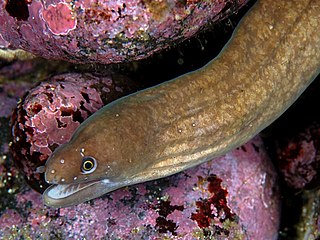 W
WAnarchias seychellensis is a moray eel found in coral reefs in the Pacific and Indian Oceans. It was first named by J. L. B. Smith Smith in 1962, and is commonly known as the Seychelles moray or the marbled reef-eel.
 W
WThe bigeyed sixgill shark is a cow shark of the family Hexanchidae. Its dorsal surface has a brownish-gray color, and is sharply separated from the light coloring of its ventral surface. The eyes are a fluorescent green while the shark is alive. The body of this shark is small, slim, and fusiform in shape. As the name suggests, this shark has six gill slits, unusual among most shark species. The head is narrow and somewhat flattened, and the mouth contains 5 rows of large, comb-shaped teeth. This shark's single dorsal fin is pushed back towards the caudal fin, and is behind the pelvic fins. The upper caudal fin is much longer than the lower, with a deep notch near the tip. All fins have thin white margins on the edge. In juveniles, the upper caudal fin has a black tip.
 W
WThe blind cave eel is a species of fish in the family Synbranchidae. It is endemic to subterranean waters in the Pilbara region, Western Australia. Like other cavefish such as Milyeringa, the blind cave eel is entirely blind and lacks pigmentation. It is listed as vulnerable under the Australian Environment Protection and Biodiversity Conservation Act 1999. Reaching a length of 40 cm (16 in), it is the longest known cavefish.
 W
WThe broadnose catshark is a catshark of the family Scyliorhinidae, the holotype and only specimen being found in deep water in the Andaman Sea in the Indian Ocean between 16 and 10°N. Its length is around 26 cm, although this measurement was taken from an immature specimen. The reproduction of this catshark is oviparous. The threats are not exactly known but it may be deepwater fisheries.
 W
WClarias maclareni is a critically endangered species of catfish in the family Clariidae. It is endemic to Lake Barombi Mbo in western Cameroon. It is currently threatened because of pollution and sedimentation due to human activities, and potentially also by large emissions of carbon dioxide (CO2) from the lake's bottom (compare Lake Nyos). It is known to grow to 36 centimetres (14 in) TL. Large individuals feed mainly on other fishes (especially cichlids), while smaller individuals mainly feed on insects.
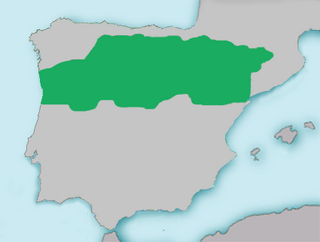 W
WCobitis calderoni is a species of ray-finned fish in the family Cobitidae. It is found in Portugal and Spain. Its natural habitat is rivers. It is threatened by habitat loss.
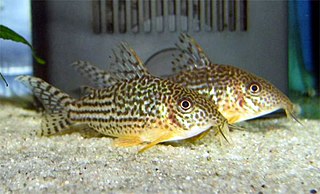 W
WCorydoras haraldschultzi is a tropical freshwater fish belonging to the Corydoradinae sub-family of the family Callichthyidae. It is found in Brazil and Bolivia.
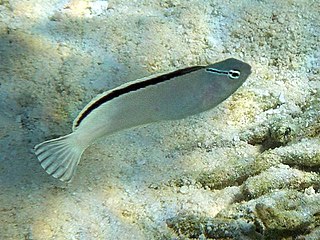 W
WMeiacanthus smithi, the disco blenny, is a species of combtooth blenny found in coral reefs in the western Pacific and Indian oceans. This species grows to a length of 8.5 centimetres (3.3 in) TL. It is also commonly known as Smith's fangblenny, Smith's sawtail blenny or Smith's harp-tail blenny. This species is also found in the aquarium trade. The specific name honours the South African chemist and ichthyologist James Leonard Brierley Smith (1897-1968) of Rhodes University in Grahamstown.
 W
WEcsenius lineatus, known commonly as the linear blenny or lined combtooth blenny, is a species of marine fish in the family Blenniidae.
 W
WElectrona paucirastra, the belted lanternfish, is a lanternfish found around the globe in the southern hemisphere between 35° S and 48° S. It grows to a length of 7.0 centimetres (2.8 in) SL. It is a mesopelagic species, which can be found close to surface at night-time.
 W
WThe Florida torpedo is a rare and little-known species of electric ray in the family Torpedinidae. It is known only from two specimens and a some wild sightings. Torpedoes have been recorded from three scattered locations in the Florida Straits and the western Caribbean Sea, and appear to inhabit coral habitats.
 W
WGorgasia sillneri is an eel in the family Congridae. It was described by Wolfgang Klausewitz in 1962. It is a marine, tropical eel which is known from the Gulf of Aqaba in the Red Sea, in the western Indian Ocean. Males can reach a maximum total length of 83.8 centimetres (33.0 in).
 W
WThe konye (Konia eisentrauti) is a critically endangered species of fish in the family Cichlidae. It is endemic to Lake Barombi Mbo, a crater lake in western Cameroon. It is threatened because of pollution and sedimentation due to human activities, and potentially also by large emissions of carbon dioxide (CO2) from the lake's bottom (compare Lake Nyos). This species can reach a length of 9.3 centimetres (3.7 in) TL.
 W
WMastacembelus flavidus is a species of fish in the family Mastacembelidae. It is endemic to Lake Tanganyika in Burundi, the Democratic Republic of the Congo, Tanzania, and Zambia. It is found among rocks in shallow, coastal waters to a depth of 6 m (20 ft).
 W
WMastacembelus platysoma is a species of fish, a spiny eel in the family Mastacembelidae. It is found in Lake Tanganyika which is bordered by Burundi, the Democratic Republic of the Congo, Tanzania and Zambia. The IUCN has listed it as being of "Least Concern".
 W
WOphthalmotilapia nasuta is a species of cichlid endemic to Lake Tanganyika. It can reach a length of 20 centimetres (7.9 in) TL. It can also be found in the aquarium trade.
 W
WThe pungu is a species of cichlid endemic to Lake Barombi Mbo in Cameroon where it prefers shallow waters of about 1 to 3 metres in depth. It feeds on invertebrates, sponges, diatoms and macrophytes. This species can reach a length of 10 centimetres (3.9 in) SL. It is currently the only known member of its genus, but it is very close to Sarotherodon. The pungu is threatened because of pollution and sedimentation from human activities. Konia, Myaka and Stomatepia are three other equally threatened genera of cichlids that also are endemic to Lake Barombi Mbo. The specific name of this fish honours the Fisheries Development Officer of Nigeria, P.I.R. MacLaren, who used his position to collect specimens of fishes, including the type of this species.
 W
WSterba's corydoras is a member of the South American Corydoras genus of freshwater aquarium catfish and one of the most popular species of Corydoras due to its attractive markings. The fish is native to the Guaporé River region between Bolivia and Brazil.
 W
WThe threestripe gourami, also known as the Mekong croaking gourami, is a species of freshwater ray-finned fish from the subfamily Macropodusinae which is part of the gourami family Osphronemidae. It is native to south-east Asia.
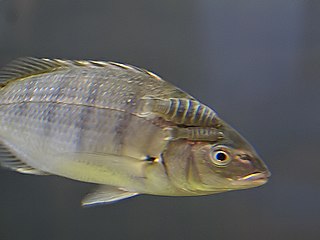 W
WThe west coast seabream or west coast steenbras is a species of marine fish in the family Sparidae. It is found in very shallow water off the coasts of to Angola, Namibia and South Africa. The International Union for Conservation of Nature lists its conservation status as being "near threatened".